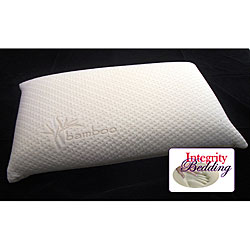I got this information from a great site called http://www.memory-foam-maniac.com/index.html
How did NASA memory foam, become the "right stuff" for great sleep? What is it? Who makes it? And what memory foam mattress problems to watch for. The story starts In 1962, Charles Yost and the rest of the NASA team designing the recovery system for the Apollo command module had a problem. How do you drop someone from the Moon without them suffering any ill effects from the sudden stop once they reach Earth?
The story starts In 1962, Charles Yost and the rest of the NASA team designing the recovery system for the Apollo command module had a problem. How do you drop someone from the Moon without them suffering any ill effects from the sudden stop once they reach Earth?The team solved NASA's problem and Apollo was a great success. Four years later Yost was asked by NASA "to assist in the improvement of airline seating for crash and vibration protection, and the development of energy-absorbing techniques for increased survivability." (translation: get rid of the pain in their asses/ save their asses)
What he developed was the first NASA memory foam. It was a polyurethane based, temperature sensitive, open-celled polymeric "memory" foam that was soft but could absorb high energy impacts by distributing the pressure and then slowly regained its original shape once the pressure was gone.
NASA's Ames Research Center used this material in a new airplane seat design. Known as "slow spring back foam", some people now call this type of material visco elastic foam. It also offered greater crash protection and was more comfortable on long flights. NASA eventually published Yost's findings in a report titled "Human Survival in Aircraft Emergencies".
NASA Memory Foam Redesigned For the Rest of Us
In 1969, Yost established Dynamic Systems, Inc. to sell the material as "temper foam". In 1974 the company sold the rights to the technology but returned to the market later with better second and third generation versions.
In the early 1980's NASA released the details of the technology for making visco elastic foam. The process was complex and unreliable, and the original material was prone to cracking and 'memory loss' which resulted in permanent sagging spots.
Tempur-Pedic Creates Memory Foam Mattress Market
Sweden's Fagerdala World Foams was one of the only companies that had the resources and equipment to perfect the NASA memory foam mattress for consumer use. Their original beds were developed for use in hospitals and were very expensive.
In 1991, they presented a consumer version, the "Tempur-Pedic Swedish Mattress," which was an immediate hit in Europe. The next year they brought the mattress to the United States and Canada to rave reviews. Eventually the company morphed into Tempur World which markets the Tempur-Pedic (sometimes also called Tempurpedic mattresses) brand of beds, toppers and pillows.
NASA recognized Tempur-Pedic in 1998 for successfully using NASA space technology to create economic opportunity and a better quality of life for millions. Shortly after, the Space Foundation licensed Tempur-Pedic to use the official "Certified Technology" seal on their products and advertisements.
Tempur-Pedic is no longer the only NASA memory foam mattress manufacturer, and visco elastic foam products can be now be purchased worldwide. You can get memory foam in Canada, and foam mattress memory toppers in the UK. Other major memory foam manufacturers are Sealy mattresses, Simmons, Serta, Carpenter, Englander, Classic Sleep, Anatomic Global, Bragada, Essentia, IR Specialty Foam, Jeffco Fibres, Spirit Sleep, World Sleep Products, Serta Restokraft Mattress and Sleep Products Inc.
MORE MEMORY FOAM FACTS
Memory Foam Mattress Problems The technology has come a long way since the 1960's. The first NASA memory foam mattress wasn’t durable, was prone to cracking and losing it's 'memory'. Today most complaints are about odors and a tendency for some memory foam mattresses to collect heat around the body...Memory Foam Density is measured in lbs/square foot for memory foam. Most people find 3lb to 6lb is comfortable. But there's more to consider...
Shredded Memory Foam NASA foam is very comfortable, but sometimes solid pieces are too expensive, heavy or feel unfamiliar...
Memory Foam - The Truth is Full of Holes More memory foam facts including density details and what ILD means to you and why you should care.

It is imperative that we read blog post very carefully. I am already done it and find that this post is really amazing.
ReplyDeleteOrganic Furniture by Natural Mattress Matters